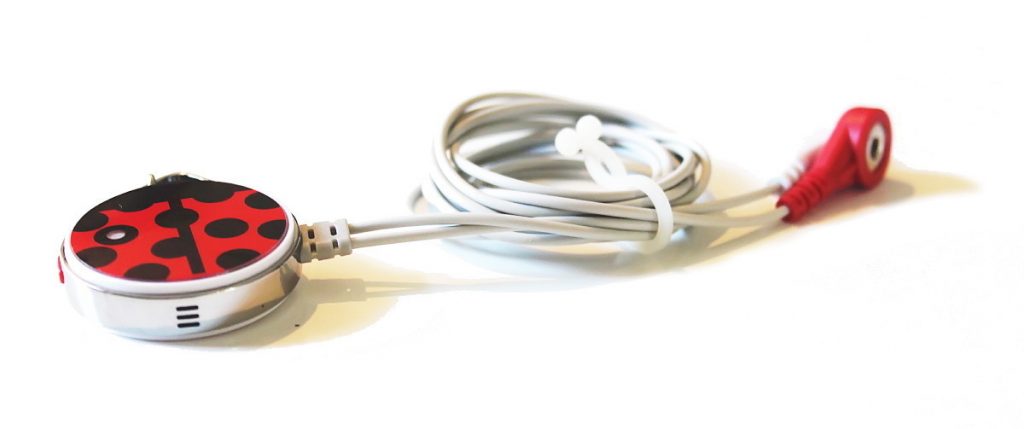Event Monitors
An event monitor is a small device that is worn for up to 28 days for longer term monitoring of any heart rhythm abnormalities. Unlike a holter monitor, this device is quite small (the size of a fifty-cent piece) and can be removed for showering and water activities.
Typical uses
Event monitors can provide valuable information where shorter monitoring periods have not established a clear cause for symptoms. Event monitors may be used for:
- Investigation following a stroke.
- Investigation for a patient at a high risk of stroke.
- Investigation of symptoms such as palpitations that have not been recorded using holter monitoring.
- Investigation of syncope, falls and dizziness.

Using the device
The small device is fitted to your chest using two leads, one near the collar bone and the other on the ribcage. The monitor is then attached to a lanyard that is worn around your neck for the duration of the monitoring period, this can be from two to four weeks. One of our trained technicians will complete the initial fitting and explanation for you.
You are required to send the information that is collected by the device twice a day, morning and night is sufficient. The information can be sent via a landline phone call, or using the mobile phone app.
The device will record any detectable arrhythmias, regardless of if you experience symptoms. You also have the ability to record when you feel symptoms by pressing the button on the device. If using the mobile app, you can use the symptom logger to record what symptom you were feeling when the event button was used.
When the device is fitted, you will be given spare stickers (electrodes) and a spare battery. If you need any help with the device, you can contact the team at HeartBug who will be happy to help with any problems.
Getting the results
We will book a follow up appointment to see us after the completion of the monitoring period. Occasionally, we will contact you before your monitoring period has finished if we have received enough information before the end of the monitoring period.

